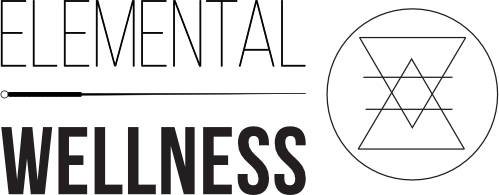
Qi, Yin Yang, Meridian, element, these are just some of the terms we use in traditional Chinese medicine (TCM) that my patients are always asking me about. They know me well apparently because clearly I love to talk about this stuff.

The first thing you need to know about TCM is that its very binary in a way that honors the anti-binary. What I mean by that is that the basis of all TCM diagnosis and treatment comes from the concept of Yin and Yang. Everything on the planet and beyond can be categorized into Yin and Yang, but fundamentally, Yin and Yang have a set of rules that ensure that everything is neither pure Yin or pure Yang.
The most fundamental laws of Yin and Yang are:
1. They are always opposite:
Everything has an opposite and therefore everything can be labeled as either Yin or Yang
Yin |Yang
Black |White
Dark |Light
Wet |Dry
Cold| Hot
Inside |Outside
Front |Back
Sedate| Active
Moon| Sun
Contracting| Expanding
This polarization creates the tension that provides stability for the world around us.
2. There is always a bit of Yin in Yang and vice versa
Each of these yin or yang things can be further broken down, i.e. the moon is yin but it also has a dark (yin) and light (yang) side, rain outside is the yin part of the yang. This can get a little confusing, but remember these classifications are always in reference to each other and so its natural that their definitions feel fluid.
Absolutes as a construct are a conceptual thing and so it is this divergence from the rigidity of definition that makes everything real.
3. They flow and change into each other;

Dawn and Dusk exist for a reason and they are the parts of the 24 hour cycle that represent transition from yin to yang and yang to yin. Nothing is stationary and in a perfect world everything is always shifting changing and moving into the next thing. This might sound on its surface like a very Yang principle (moving) and it is but in this sense, the type of movement follows the very yin path of direction and flow. Moving (yang) in a Yin way is what gives the process balance and therefore harmony. The seasons do this too (winter to summer and back again) as do our bodies when we sleep (yin) and wake (yang). Even breathing and beating hearts follow this rhythm of back and forth.
This movement and change are what makes the beauty and subtlety that we find so enchanting in the natural world.
4. Too much of either Yin or Yang will flip the balance between the two

Too much rain will lead to erosion, fire will create rain clouds and too much alcohol (yang) will lead to a fatty liver (yin) and a fever can often lead to a phlegmy cough. Before you start picking favorites, always remember that too much of one will likely cause an excess of the other as well. Above all else, the system of Yin and Yang is representative of balance too much or too little of either will cause disharmony on both sides.
As within, so without, as above, so below.
Hermes Trismegistus
Once you’ve identified the basic characteristics of what is yin and what is yang you might go around for a few days classifying and sub-classifying all sorts of things. Observing how they change and affect one another is a great way to learn and get comfortable with the concept.
If you found this little bit enjoyable, still have questions about a diagnosis or just want to know more about how this relates to your health, you would love my course “Intro to TCM” about the nuts and bolts of TCM.

